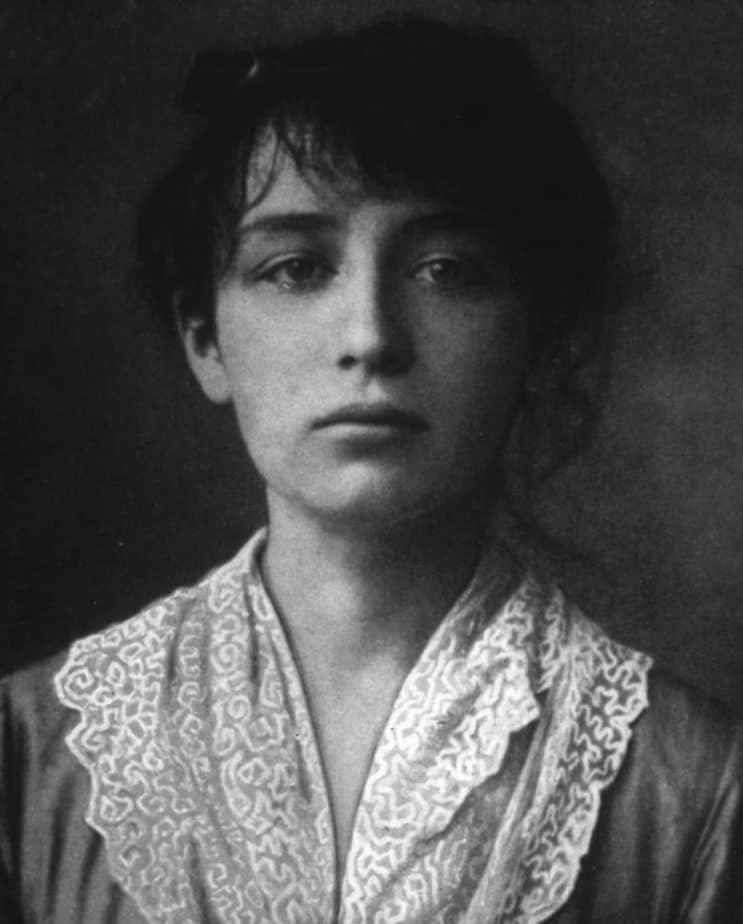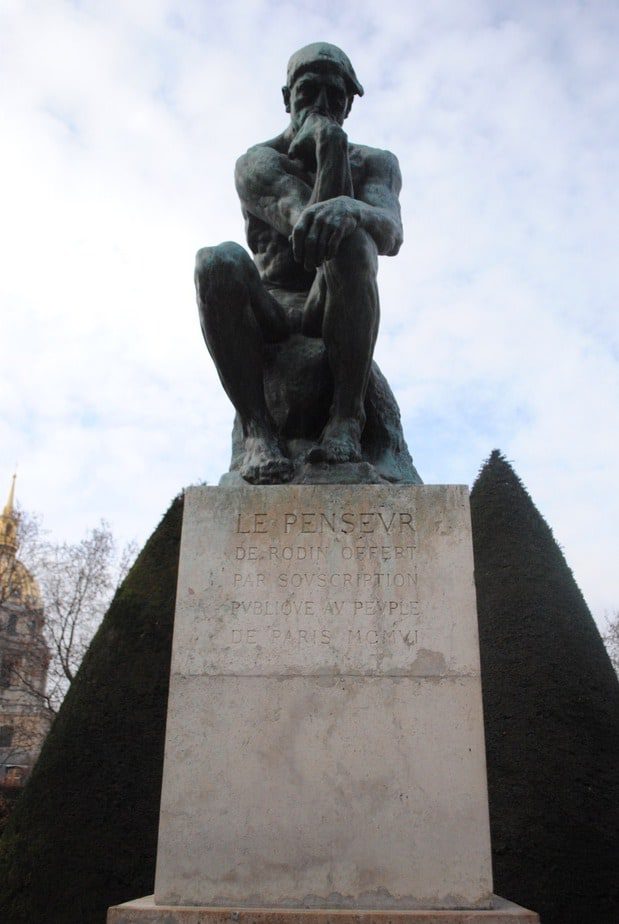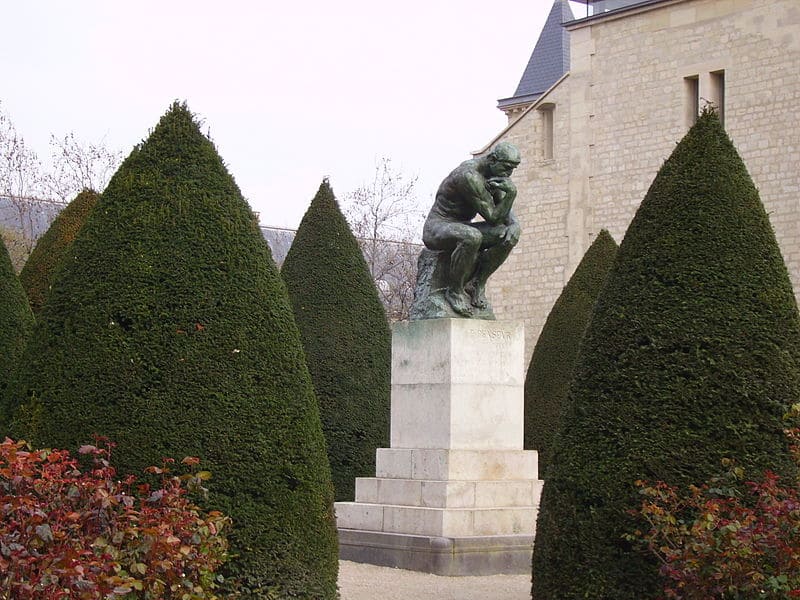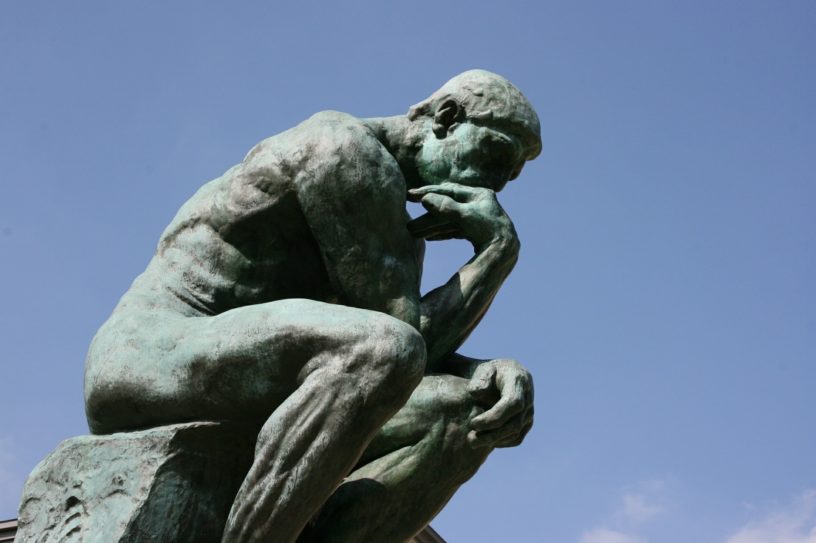Top 5 interesting facts about The Thinker by Auguste Rodin
The Thinker by Auguste Rodin (born in 1840 and dead in 1917) is one of the most famous art sculpture in the western world. Interpretations of The Thinker’s enigmatic and introverted position, as well as the circumstances surrounding its creation by sculptor Auguste Rodin, have been at the center of much heated debates in the art world and beyond. Are you wondering what makes The Thinker interesting?
In this article, I have tried to present to you the top 5 interesting and fun facts about The Thinker. I hope it can help explain why this art piece has been the subject of such attention ever since its creation.
Also, there is one thing you should know if you are curious about all things French and Parisian: some locals are giving free tours to help you experience the French capital like a true Parisian. If you are willing to explore the hidden gems in each of Paris’ iconic neighborhoods and truly feel the city like a local, click here to book yours!
Many Rodin sculptures are disseminated all over the streets of Paris, so always keep an eye out when you are walking the streets of the capital.
He famously declared « I have an infinite admiration for the naked body ; I almost worship it ».
Auguste Rodin famously made more than 20 drafts of the sculpture (which are often hard to tell from the original), and these drafts are now disseminated all around the world. You can find them in museum Ca Pesaro in Venice, in the Laeken cemetery in Brussels, at the entry of the California Palace of the Legion of Honor in San Francisco, in the museum Brennand in Brasil, and also in Meudon (a city in the outskirts of Paris), in the villa des Brillants on Auguste Rodin’s own grave.
So without further ado, let’s explore together what makes The Thinker so special.
1. The life of August Rodin was full of enigma and scandal

Portrait of Camille Claudel – Camille Claudel Foundation – Source: Wikimedia Commons
Auguste Rodin’s career started when he was 37 years old, in 1877. His path to fame started with a scandal surrounding his sculpture l’Age d’Airain, which represents a nude man symbolizing the third age of mankind as described by Hesiode. The dimensions of the statue are full-scale; and the body of the nude man is so perfectly carved that Auguste Rodin was accused of having molded the statue directly on a real man’s body.
The scandal that arose would accompany Rodin throughout his whole life, many wondering how he was able to sculpt such perfect bodies. Following this, Rodin never sculpted full-scales statues again, to avoid being accused of molding them on real bodies.
The other famous fact about Rodin’s life was his tumultuous relationship with his student Camille Claudel. Camille Claudel nowadays became a famous artist herself; her passion with Auguste Rodin has been at the center of a widespread fascination in the art world and beyond. It gave birth to several fims (including one starring French actress Isabelle Adjani) and plays.
Camille Claudel was the sister of famous French writer and poet Paul Claudel; she was an extraordinarily perfectionist sculptor obsessed with her art. Rodin and Camille Claudel fell in love but had a tumultuous on and off relationship which ended with Camille Claudel suffering from an impressive breakdown and being forcefully admitted into a psychiatric asylum, where she died. Up until her death, Rodin kept sending her money even though they had broken up.
2. Auguste Rodin hesitated on the title of the Thinker

The Thinker by Auguste Rodin – Rodin Museum, Paris by Molli McConnell
Originally, the Thinker was supposed to be a part of a humongous door ordered by the Musée des Arts Décoratifs de Paris. The door was supposed to feature more than 200 figures based on the Divine Comedy by Italian writer Dante.
The Thinker was initially called The Poet, and represented Dante himself facing and contemplating Hell and reflecting on his masterpiece. It was supposed to go on top of the door. However, Rodin quickly realized that the door project was too ambitious and decided to make The Poet into a more general figure, the Thinker, and exhibit it on its own.
Rodin famously said about it : « He does not think only with his brain, with his frowning eyebrow, his spread nostrils and his pursed lips, but also with every muscle in his arms, back and legs, his clenched fists and clenched toes. »
3. The Thinker offered a new representation of Thought in art

Musée Rodin – by Yair-haklai – Wikimedia Commons
One of the most interesting things about Rodin’s Thinker is that it portrayed Thought for the first time in human form in art. Indeed, before the Thinker, Thought and Wisdom were usually portrayed by the greek goddess Athena. This representation of Athena as Wisdom had been reproduced countless times in western art.
Auguste Rodin introduced with The Thinker the idea of Thought being portrayed by a human, a man seeming to face a dilemma but still in a position of power, highlighted by his muscular and strong body, at rest but ready to get up. This binarity is at the heart of what makes the Thinker a masterpiece: an introverted man deep into his thoughts, but with a strong insistence on his robust body ready to get up and act.
This representation of Thought as an introverted man was revolutionary because for the first time, wisdom was represented by a fleshed-human and not by a goddess.
Starting 1888, the Thinker started to be exhibited on its own, separated from the door on which it was supposed to sit. In 1904, the statue was molded into a bigger, more impressive version.
4. It was inaugurated in front of the Panthéon in 1906 became a symbol of democracy

Paris Panthéon by Gerd Eichmann – Wikimedia Commons
The Thinker was originally inaugurated in front of the French Panthéon in 1906. It was particularly located in front of a monument commemorating the French Left; which holds the remains of famous French writers such as Emile Zola, Victor Hugo, Voltaire.
As such, it quickly became a symbol of democracy, and a key location and starting point for political demonstrations. In a rising climate of socio-political crisis, public authorities increasingly saw the Thinker as a threat, and moved it to the musée Rodin in 1922.
5. The original Thinker is in Paris

The Rodin Museum in Paris – Source: Pixabay CC0
Even though replicas of the Thinker are displayed in a lot of museum all over the world, the original is in Paris, at the Musée Rodin (Rodin Museum). The museum is accessible at 77 Rue de Varenne, 75007 Paris. I would advise you to visit it in the weekdays rather than the weekends since it can get quite crowded; also it is one of my favorite Paris museums, so apart from the Thinker, there is plenty to see!
Planning a trip to Paris ? Get ready !
These are Amazon’s best-selling travel products that you may need for coming to Paris.
Bookstore
- The best travel book : Rick Steves – Paris 2023 – Learn more here
- Fodor’s Paris 2024 – Learn more here
Travel Gear
- Venture Pal Lightweight Backpack – Learn more here
- Samsonite Winfield 2 28″ Luggage – Learn more here
- Swig Savvy’s Stainless Steel Insulated Water Bottle – Learn more here
Check Amazon’s best-seller list for the most popular travel accessories. We sometimes read this list just to find out what new travel products people are buying.










